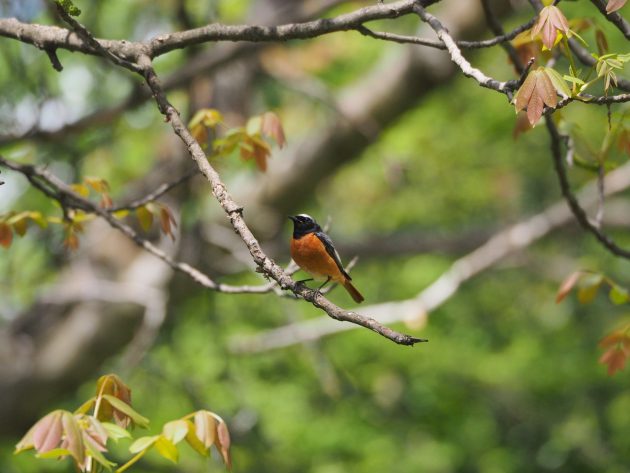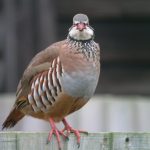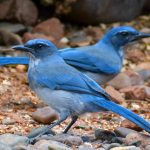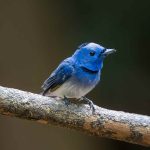
I’m really a birdwatcher, not a bird photographer, though these days I usually carry a camera. I do so for a variety of reasons, but I admit to a strong hunting instinct, so I enjoy capturing images (trophies?), of the birds I encounter. It’s satisfying to come back from a day’s birding, download my photographs on to my iPad, and relive the excitement of each encounter.
Like most people who photograph birds, I use a long lens to enable me to capture portraits of the birds I point the camera at. OK, that sounds as if I am stating the obvious, but it’s satisfying to see my subject fill the frame. It’s why I use a long lens, and I often wish it was even longer. However, it was reading my fellow contributor Faraaz Abool’s recent account of his exploits in Costa Rica (Birding the slopes of the Turiabla Volcano) that reminded me that pictures of birds in their habitat tell you a great deal that pure portraits fail to do.
Faraaz’s style is to picture a bird in its landscape, and as his work shows, such photographs can be both effective and evocative. It prompted me to trawl through my picture library and pull out a series of birds in landscapes. I’ve never published any of them before. None are particularly exciting, but I hope that you find them interesting, and would welcome comments on them. Perhaps I should put more effort into taking more of these pictures, or should I stick to portraits?

A Whimbrel on migration. North Norfolk, UK, May. We think of Whimbrels as shore birds, but on migration they often come inland

Greater Flamingoes. Greece, December. The sky was threatening a storm, but the Flamingoes were illuminated by a low sun

Hunting Barn Owl. Suffolk, UK, June. In England Barn Owls frequently hunt in daylight. This bird was photographed late on a long June evening

Cuckoo, Southern Caucasus, May. A rare opportunity to photograph a Cuckoo from above. The immense mountains are a reminder of the obstacles facing migrant birds

Pied Wheatear, southern Georgia, May. These wheatears were breeding in an extensive area of scrubby, arid steppe that reminded me of parts of East Africa

Common Redstart, Georgia, May. The leaves were just starting to unfurl. In another week it would have been much harder to spot, and photograph, this bird

Migrating Swallow, Halkadiki, Greece, May. A reminder that migrating Swallows have to cross great expanses of sea

Chiffchaff, Suffolk, UK, October. This one was in my garden. The yellow leaves of autumn gave it near perfect camouflage

Great Grey Shrike, Rajasthan, India, March. Shrikes are typical birds of open spaces. This is rather a boring photograph, but it reminds me of the remarkably bird-rich agricultural landscape of this part of northern India

A Northern Wheatear on its breeding grounds, Galicia, June. Galicia is known as Green Spain for a good reason, as this photograph shows

Northern Wheatear, Menorca, Spain, September. A migrant, heading south. The dry-stone wall makes an attractive perch

Spotted Flycatcher, Poland, May. In early spring Polish woods are a distinctive bright shade of green

White-eyed Kestrels, Etosha, Namibia, February. Were they nesting here?

Jackdaws collecting fur for their nest, Andalucía, Spain, April. Digiscoped. The cow seemed quite unbothered by the Jackdaws

Blackgrouse, Arctic Finland, March. This was also digiscoped – the birds were very distant. It’s a picture that evokes, for me, the chill of the Arctic in winter

White-throated Kingfisher, Sultanpur Bird Sanctuary, India, early February. Winter days here are often dull and misty

The same bird as above – not cropped. I walked closer. I find the landscape picture more interesting

Kittiwake, Lowestoft, UK, April. Kittiwakes are ocean-going birds, but they nest on buildings in Lowestoft, so you have the unusual sight of a proper sea bird flying along urban streets

Common Tern, Peraia, Greece, April. I have much better shots of the tern, but I like the setting

Low tide, with Little Egret and Black-headed Gull. North Norfolk, July. It’s a picture of mud and water, the birds are incidental

A Curlew on the tideline. North Norfolk, November. Not a great shot of the Curlew, but this is how we so often see them














It’s just an opinion, but generrally speaking I find the “bird in landscape” picture more interesting because it gives me an idea where to go to see the bird myself. Portraits may be prettier to look at – there’s something to say for both. However, I mightily enjoyed the pictures in this post and those grouse in the Arctic, that’s poetry.
Your photos illustrate nicely that one should really take both portraits and these “landscape with birds” photos. Not that I usually follow my own advice though – I guess as a trophy, portraits are just more satisfying, though not necessarily better.
I thoroughly enjoyed this post. Each picture would make a good first page of a set of pictures from the many places you’ve traveled. Each one says a little more than an up close portrait would have.